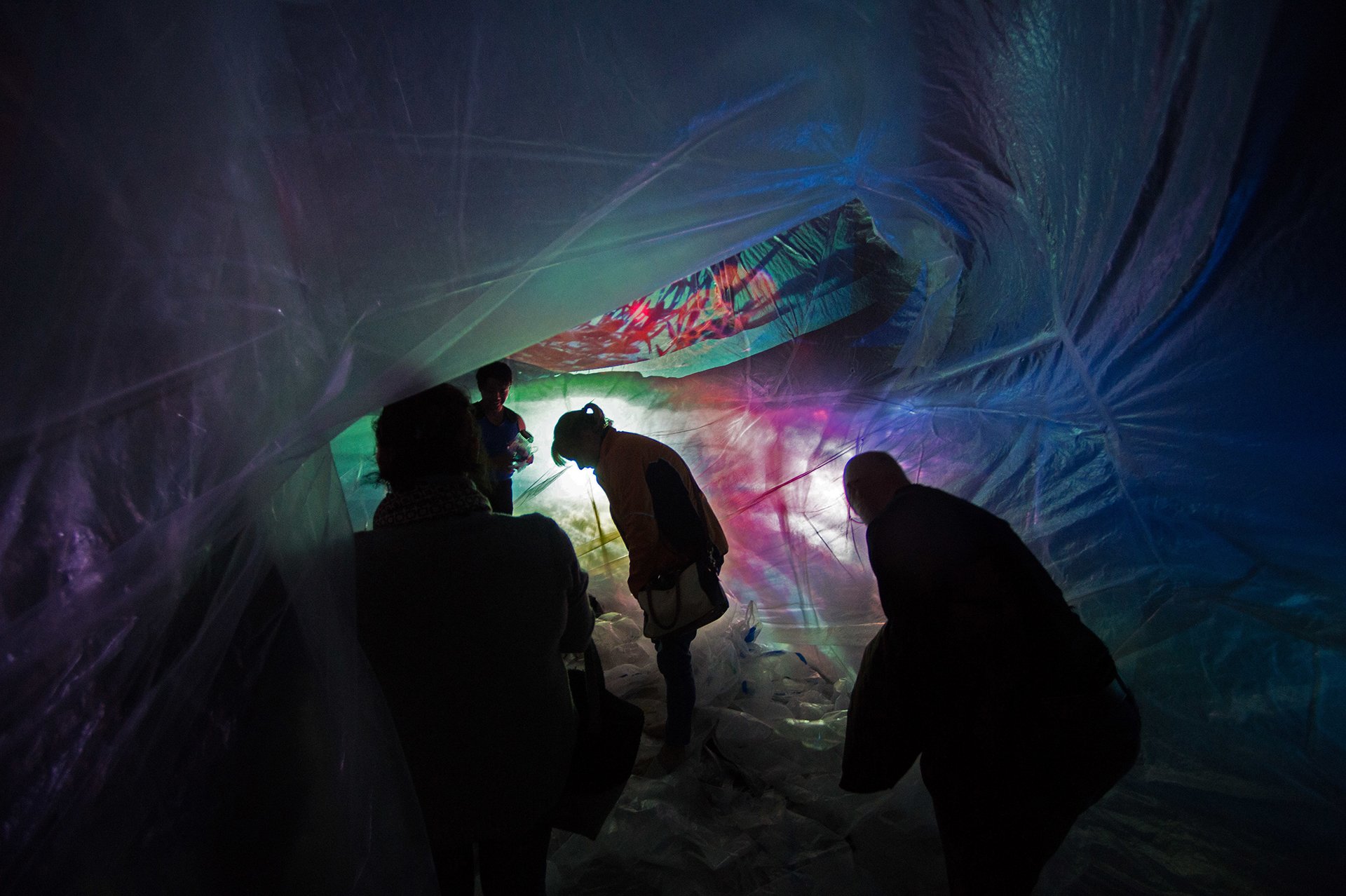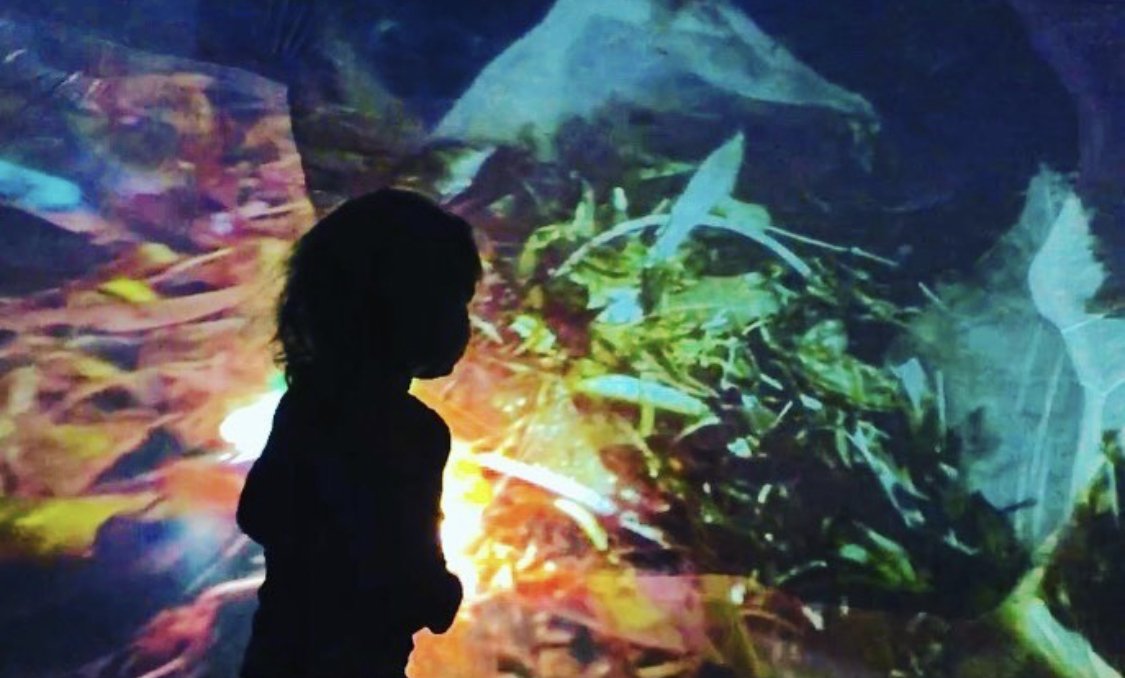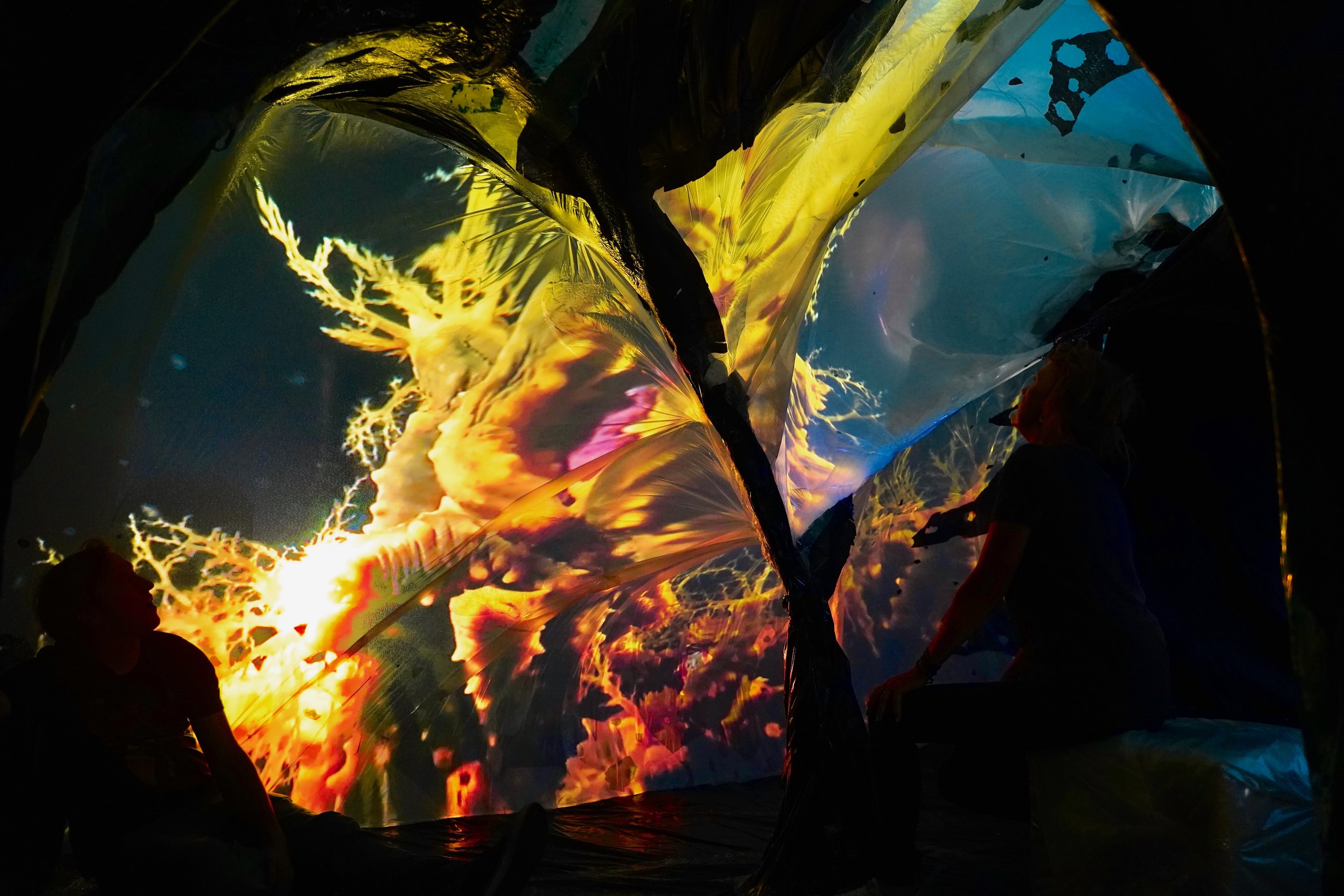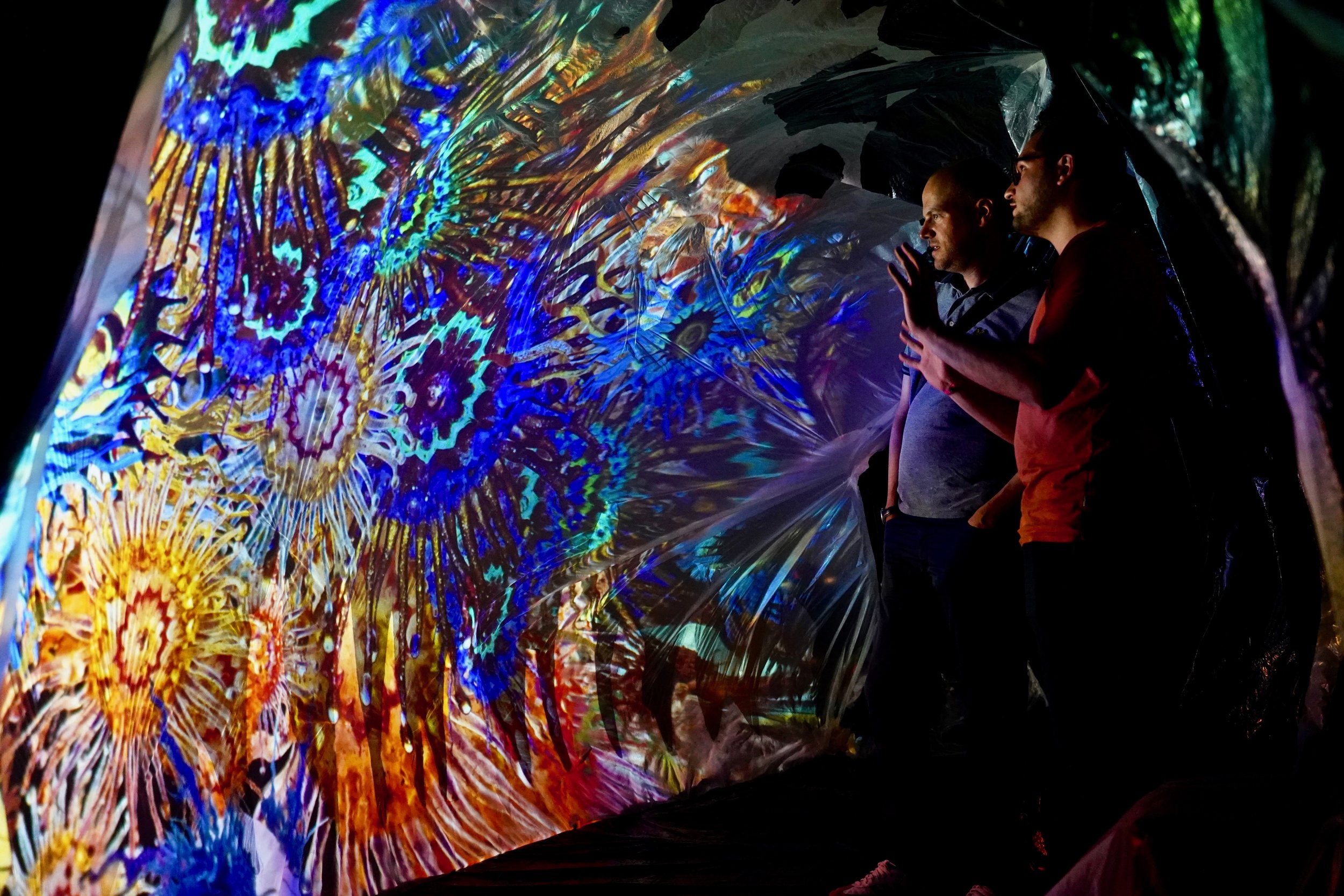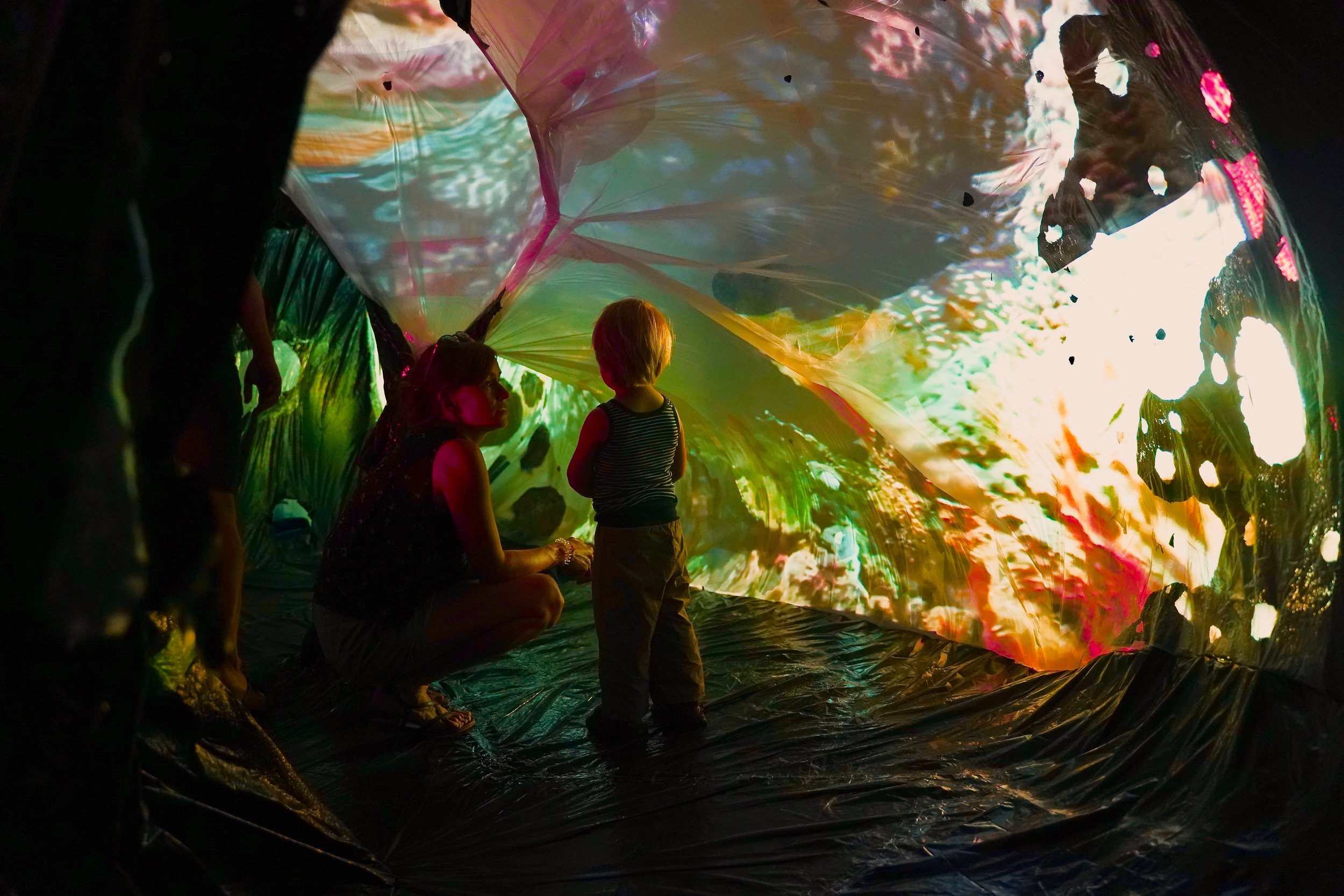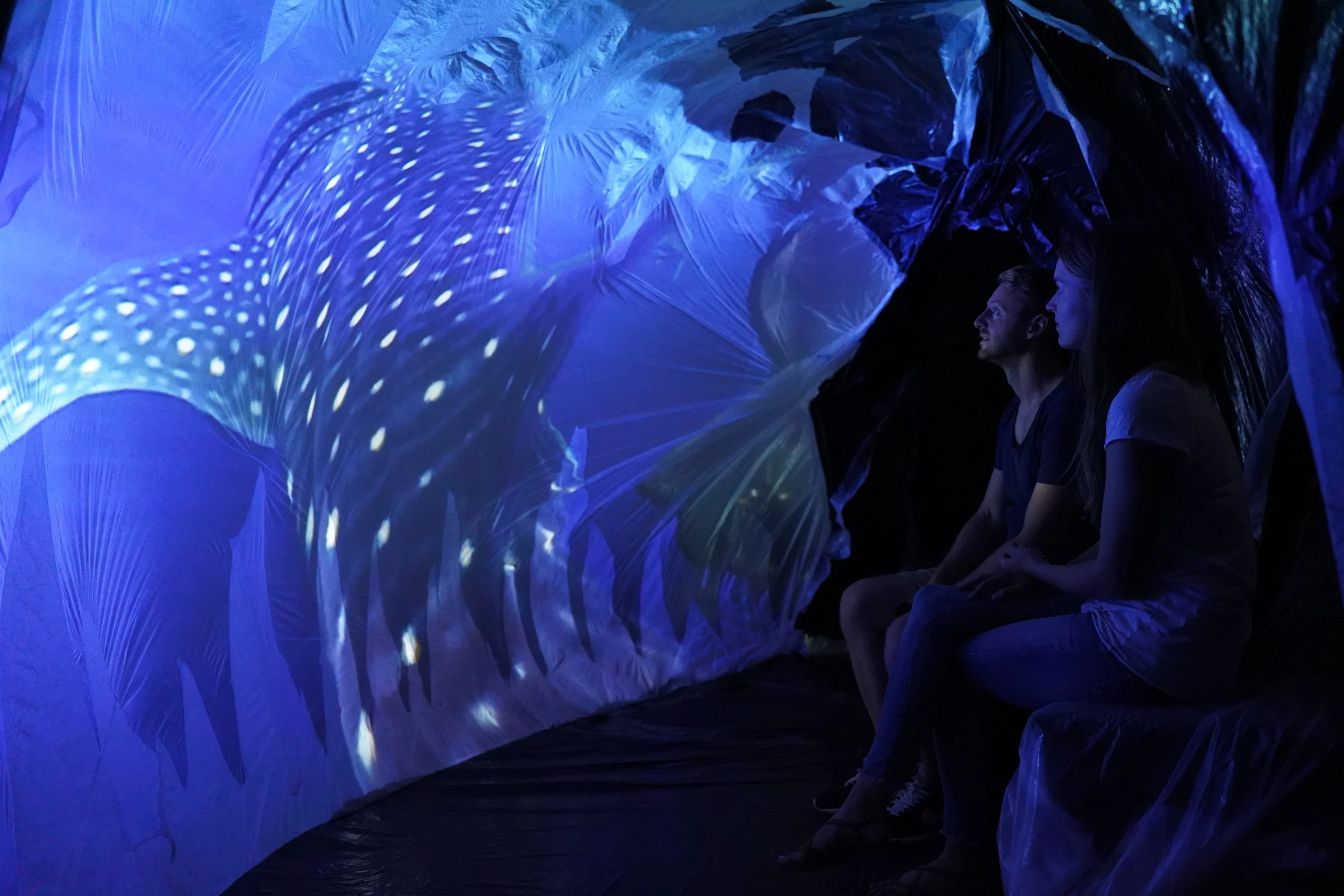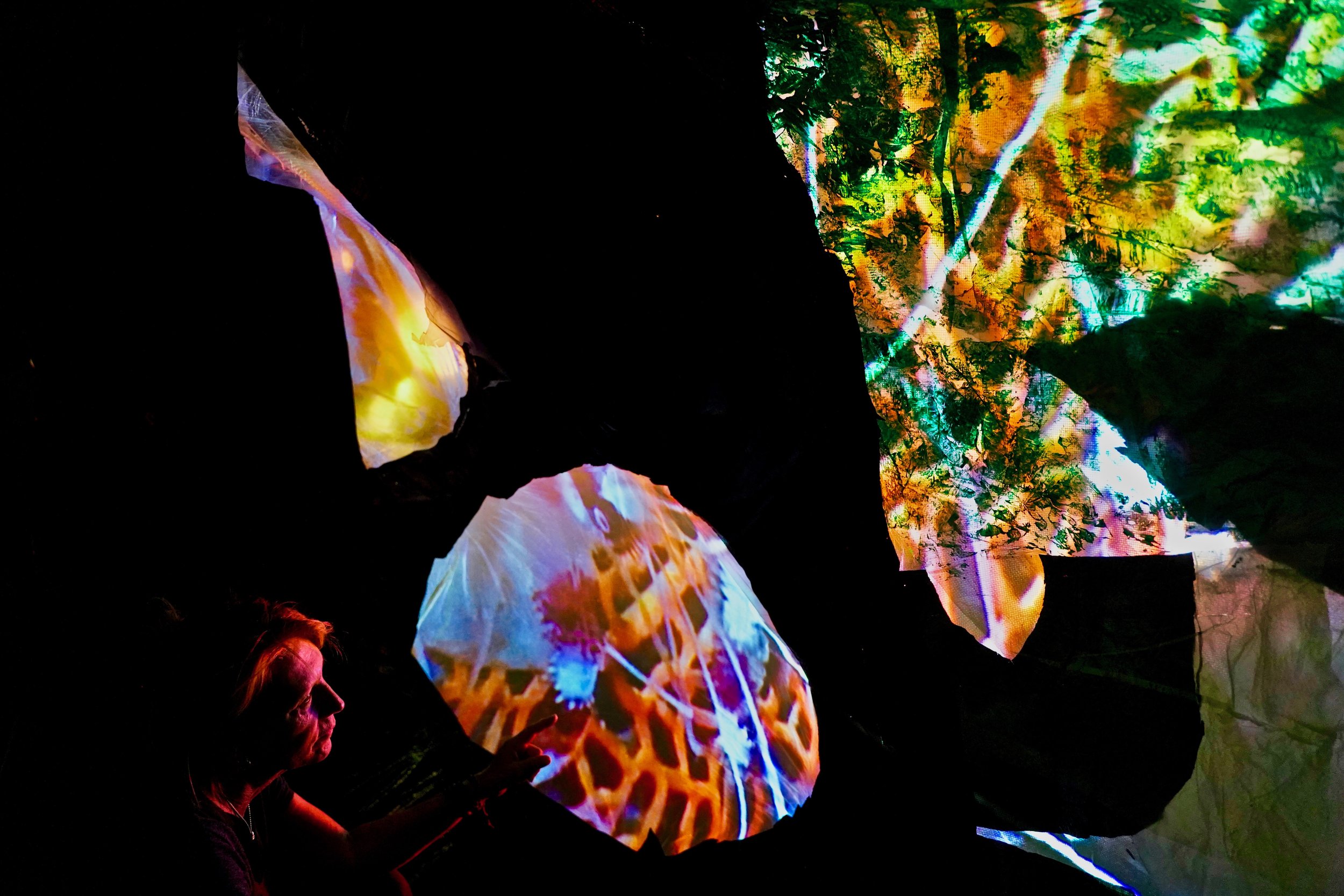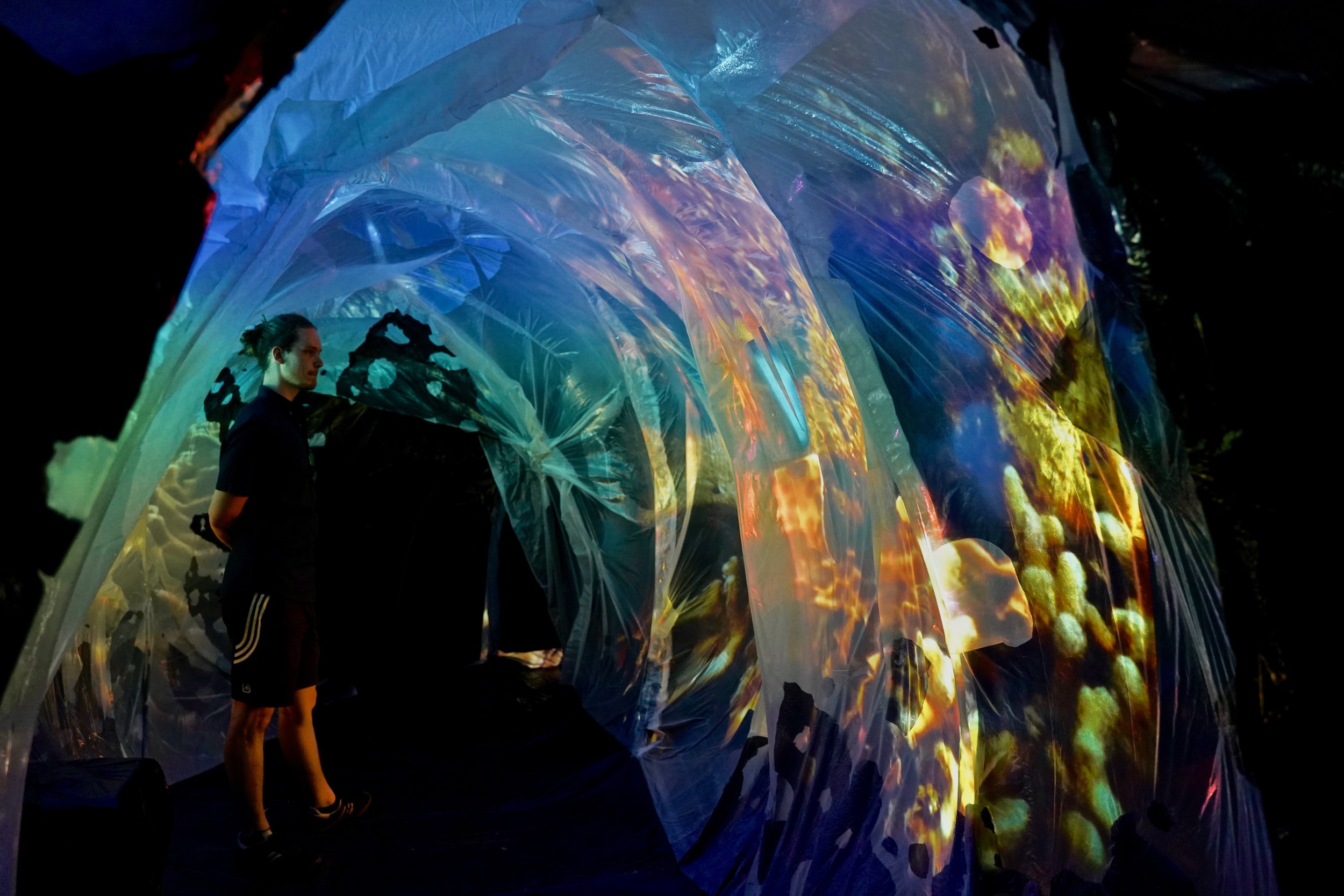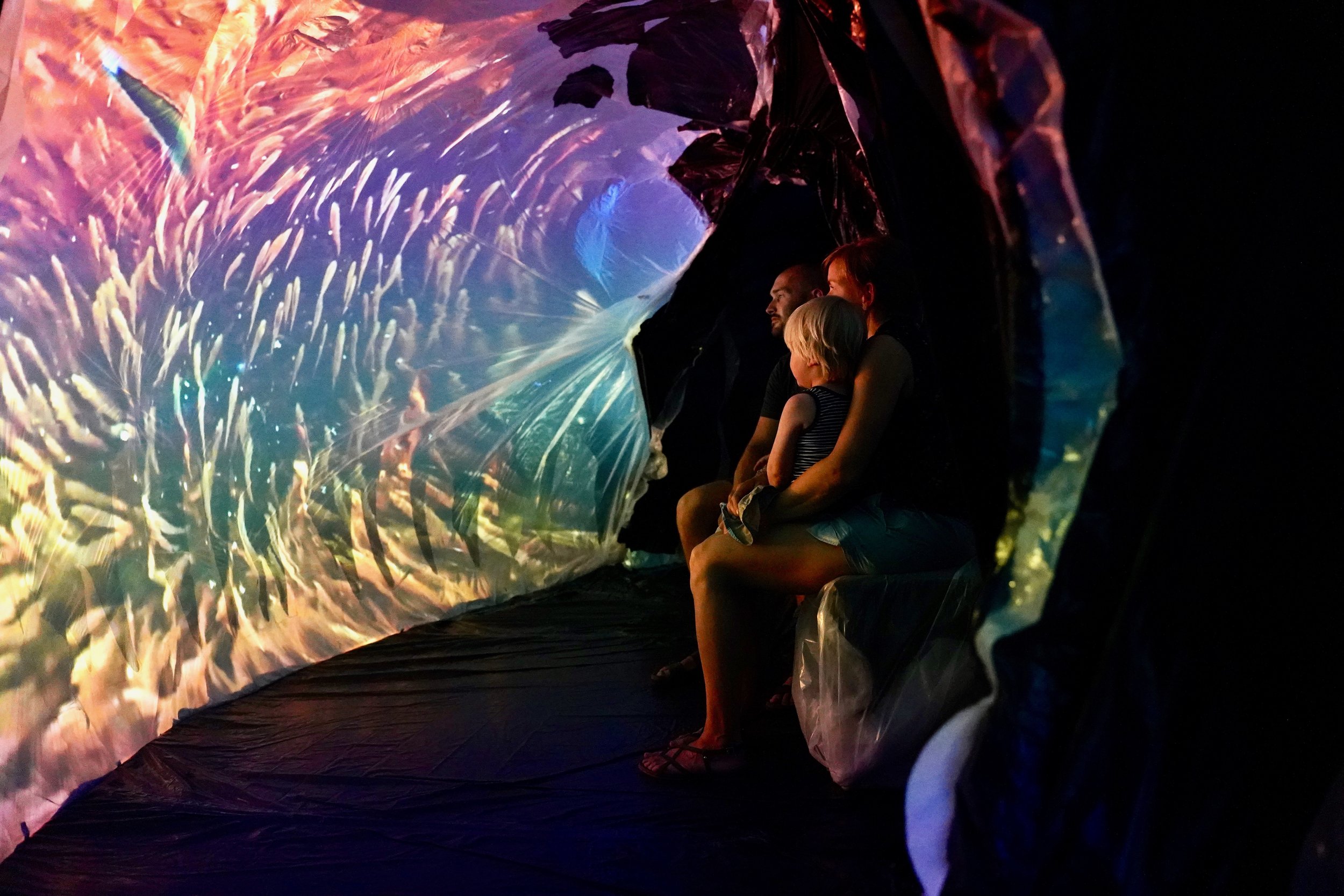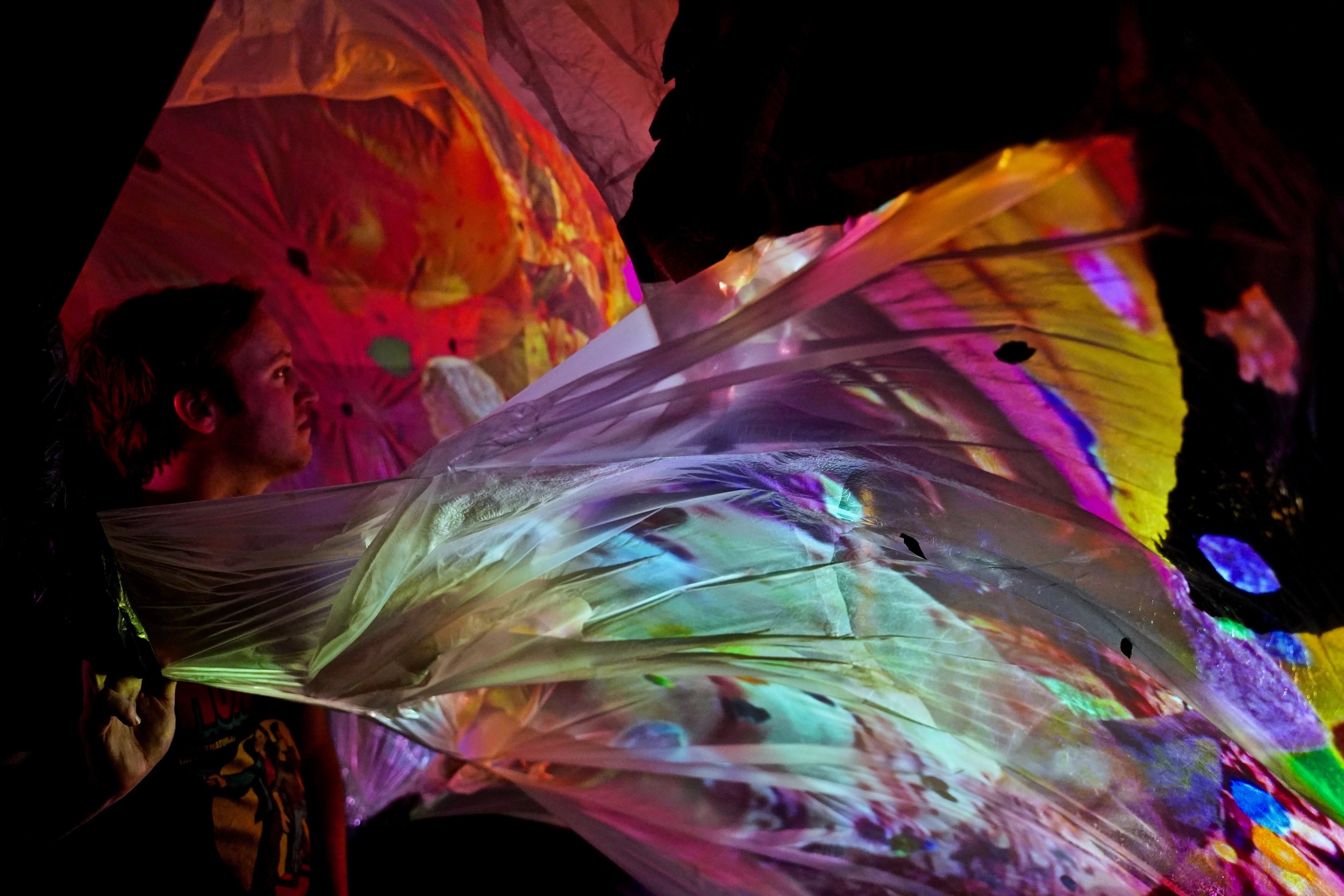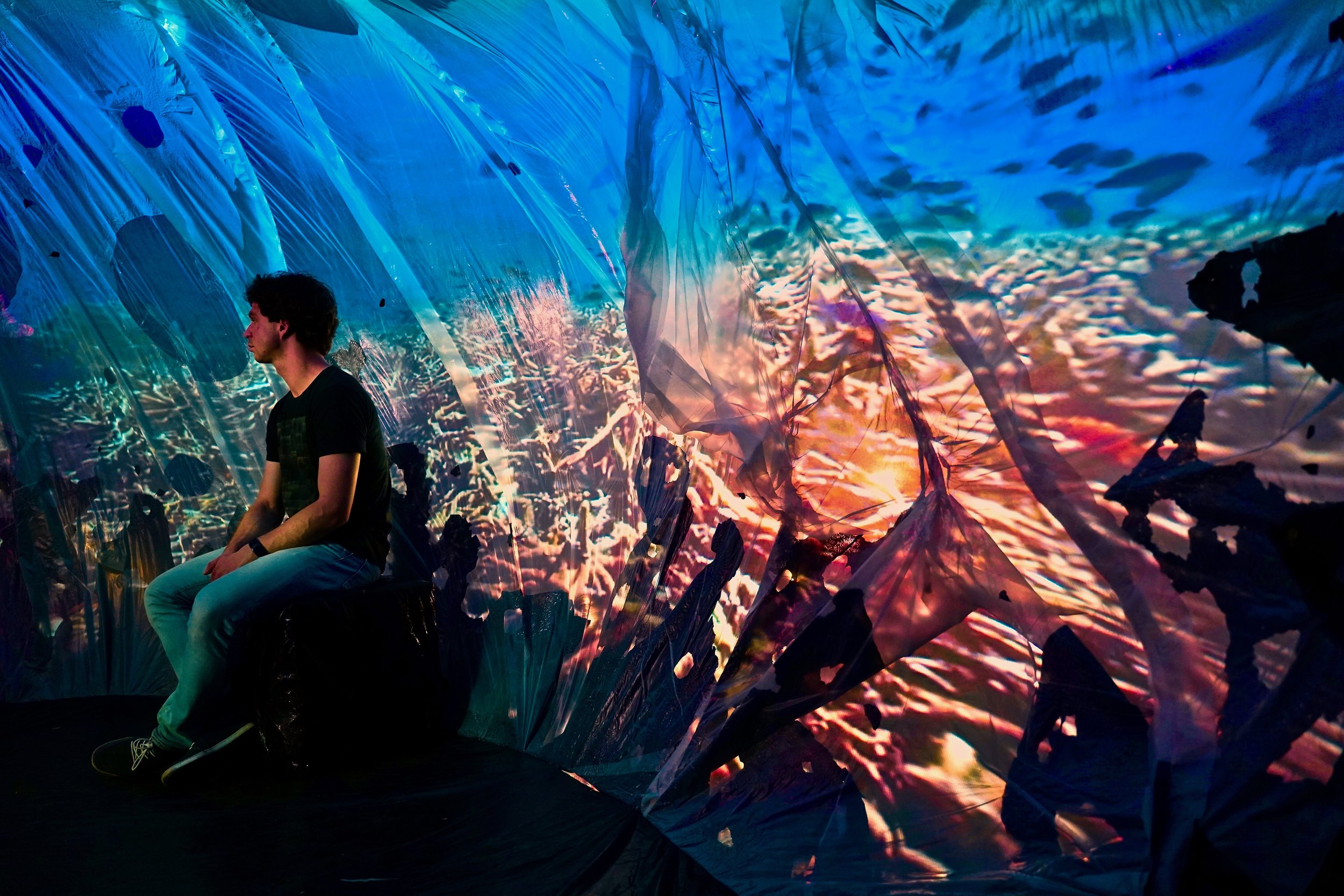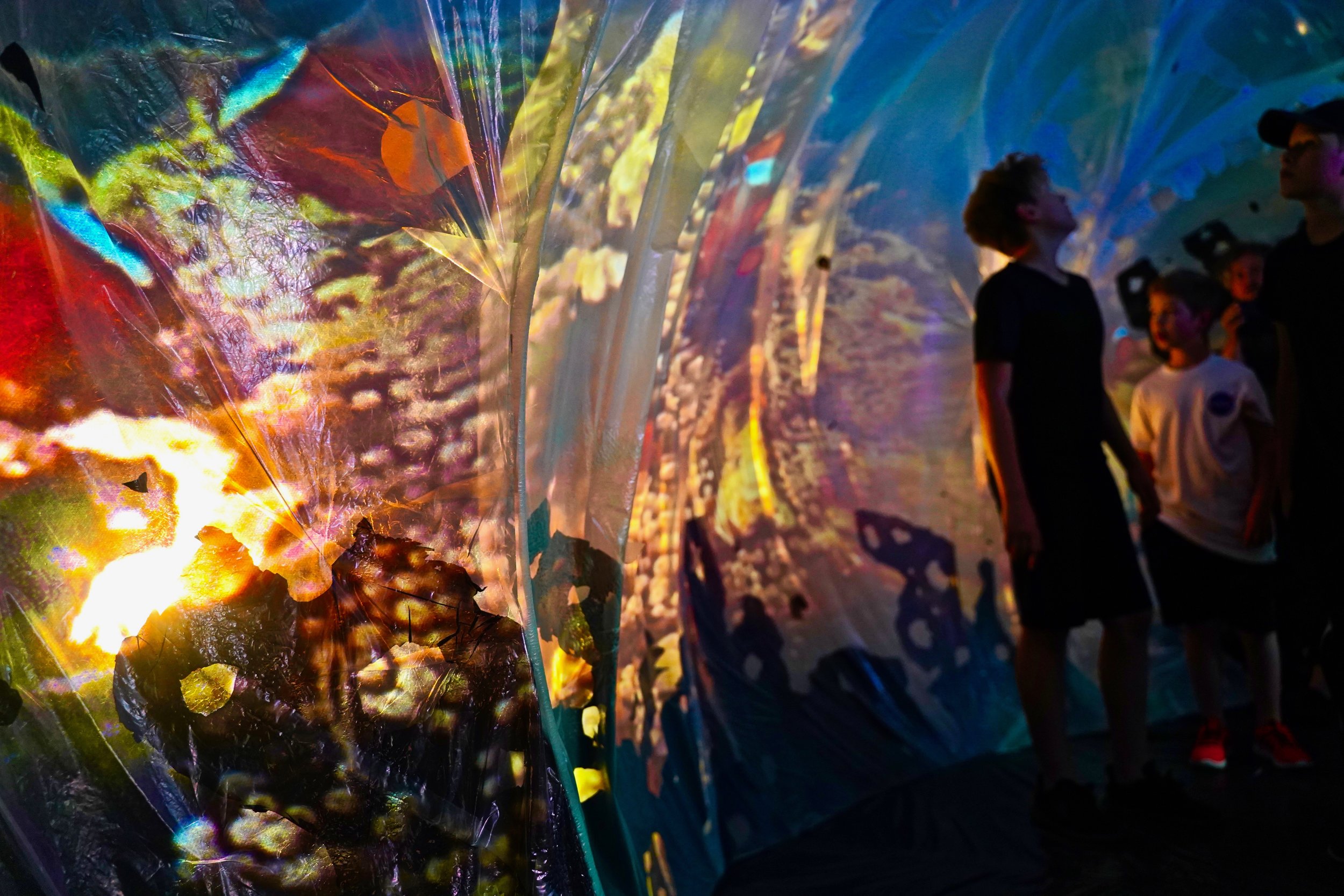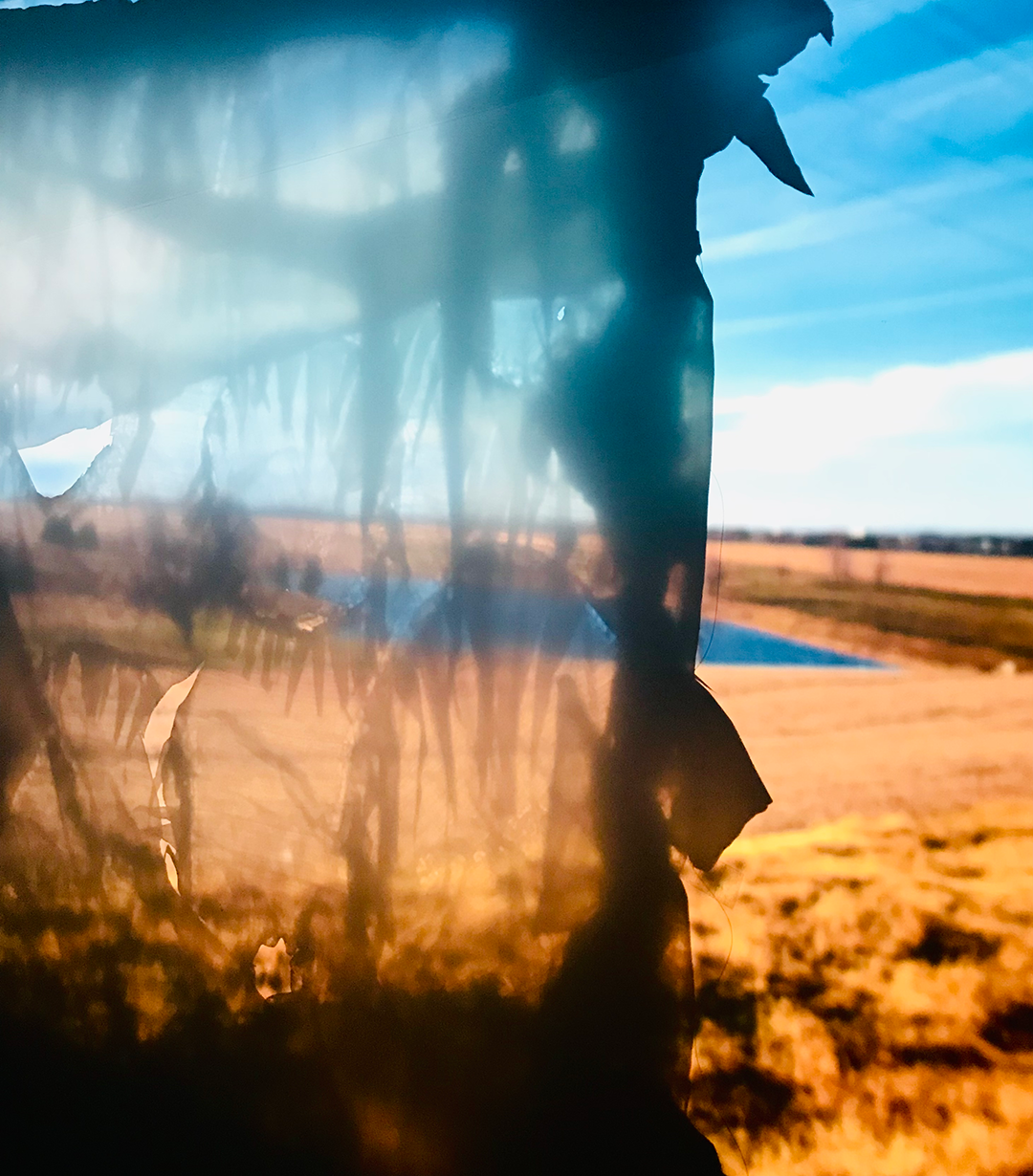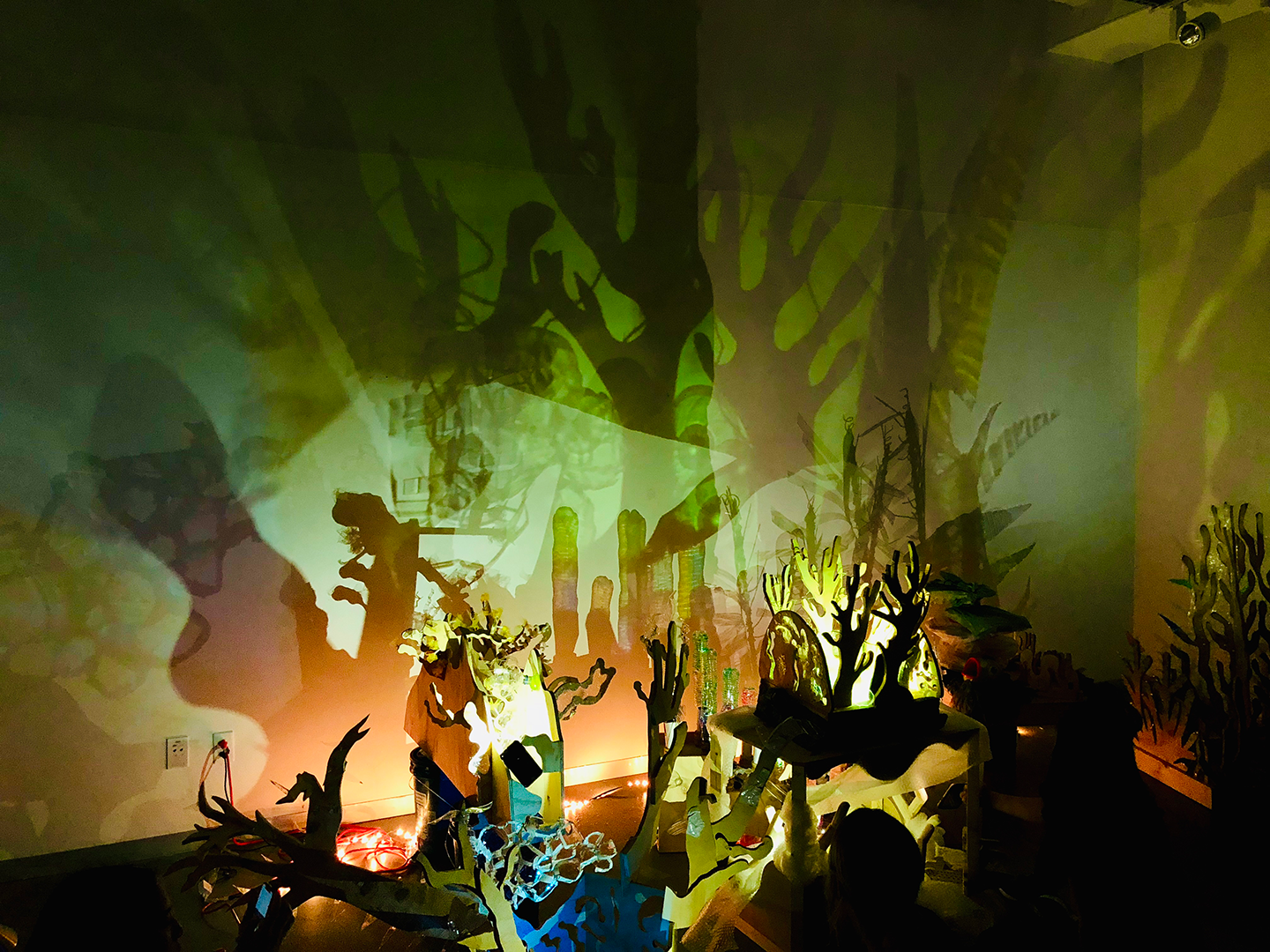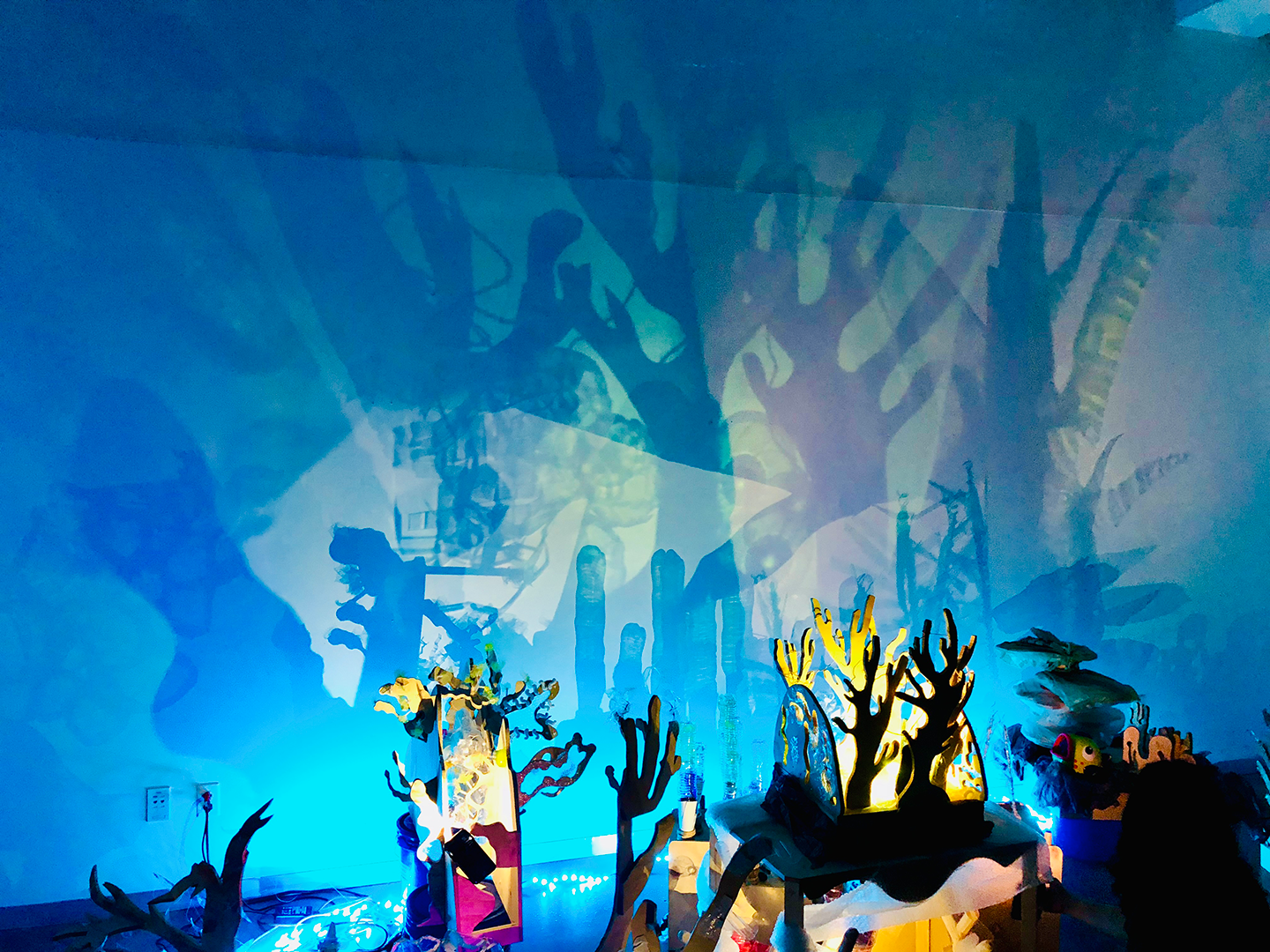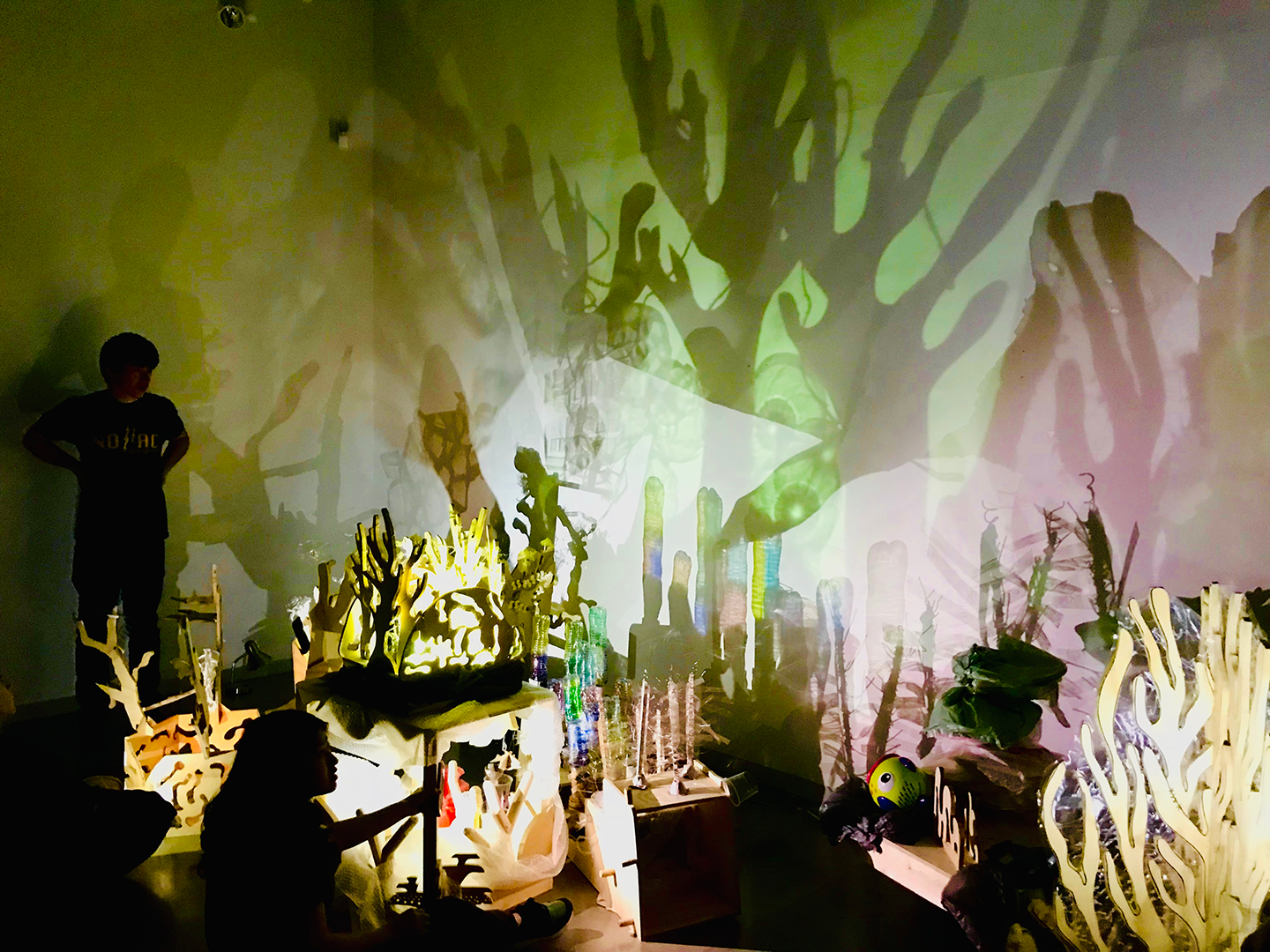JD Whitman
PLASTICITY PROJECT
An ongoing series of community-specific, immersive, and interactive art installations. Each piece is designed to creatively engage viewers with research on the prevalence of plastic pollution, including its threat to marine biodiversity, potential solutions to the problem, and action steps for individuals and communities.
In each exhibition location, discarded plastic is collected from the surrounding area and used to construct a site-specific, large-scale, enterable plastic inflatable. The walls of the inflatable are projection-mapped with underwater documentation and scientific animations of ocean areas directly influenced by that community, transforming the interior into a captivating, immersive environment.
Upon entry, audiences are submerged beneath the ocean’s waves and introduced to the wonders of the marine realm. While exploring the inflatables’ winding tunnels and cavernous chambers, viewers are encouraged to engage with the physical space and visual narrative through real-time manipulation of video and audio, interplay with strategically placed performing artists, and participation in interactive art activities.
Each installation brings the ocean to a community, translates complex scientific ideas, eases ecophobia and eco-anxiety, and sparks positive conversations surrounding the plastic pollution crisis.








